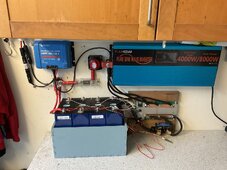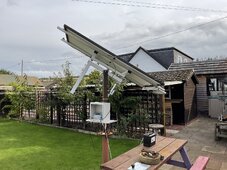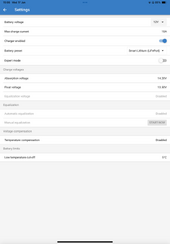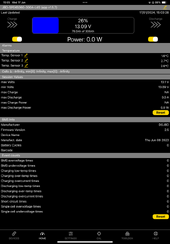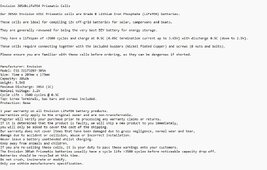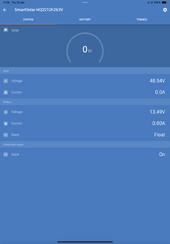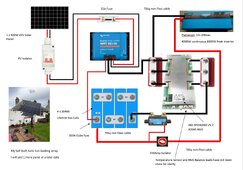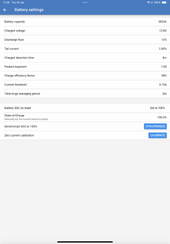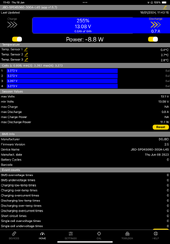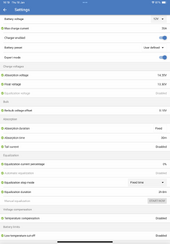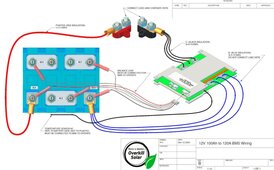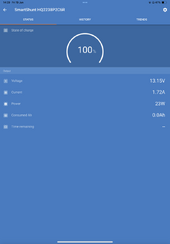Jockmacrea
New Member
- Joined
- Jan 6, 2022
- Messages
- 23
Hi, I’m located in the Scottish Borders near the town of Hawick,
just finished my garden solar setup comprising
1x440 mono crystalline 42v 10.5Amp panel
1xVictron smart shunt
1 x Victron 100/50 MPPT controller
4x300Ah 3.2v Grade B lifepo4 cells
1xJBD-SP04S060 BMS
1x4K/8K 12Vdc to 240Ac inverter
Various switches and fuses.
Ok lots of people tell me I got it all wrong and should have opted for a 24V system. With 24V this would have kept voltage drops to a minimum and reduce the size of the cables used. Well the max length of my cables are no longer than 12” and i used gauge 0 Cable. Hopefully this will be fine. Too late for me to change now, I cannot afford to purchase another 4 cells. I will however for one more 440W panel to my setup. So for now, I have made my bed and will lay in it. So with all that said the big switch on came today, all went well and the smart shunt was updated and configured. I now need to pair the Bms Bluetooth so if someone can point me to thelink for download.
Please be aware the complete installation will be guarded with plexiglas to ensure max safety.
I’m a raw beginner so any comments whether good or bad would be most welcome. Attached is a picture showing my automated sunseeking array and my Battery/BMS installation.
just finished my garden solar setup comprising
1x440 mono crystalline 42v 10.5Amp panel
1xVictron smart shunt
1 x Victron 100/50 MPPT controller
4x300Ah 3.2v Grade B lifepo4 cells
1xJBD-SP04S060 BMS
1x4K/8K 12Vdc to 240Ac inverter
Various switches and fuses.
Ok lots of people tell me I got it all wrong and should have opted for a 24V system. With 24V this would have kept voltage drops to a minimum and reduce the size of the cables used. Well the max length of my cables are no longer than 12” and i used gauge 0 Cable. Hopefully this will be fine. Too late for me to change now, I cannot afford to purchase another 4 cells. I will however for one more 440W panel to my setup. So for now, I have made my bed and will lay in it. So with all that said the big switch on came today, all went well and the smart shunt was updated and configured. I now need to pair the Bms Bluetooth so if someone can point me to thelink for download.
Please be aware the complete installation will be guarded with plexiglas to ensure max safety.
I’m a raw beginner so any comments whether good or bad would be most welcome. Attached is a picture showing my automated sunseeking array and my Battery/BMS installation.



